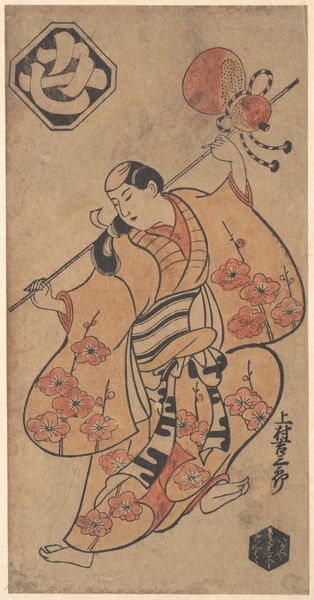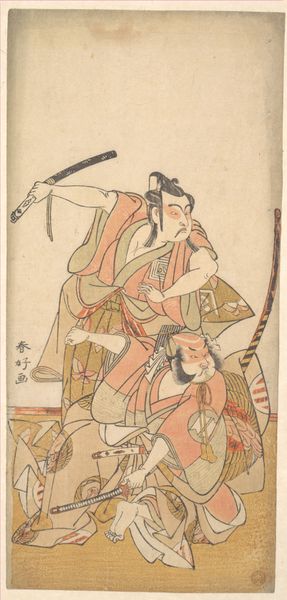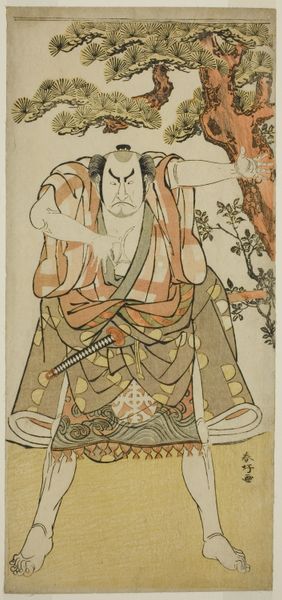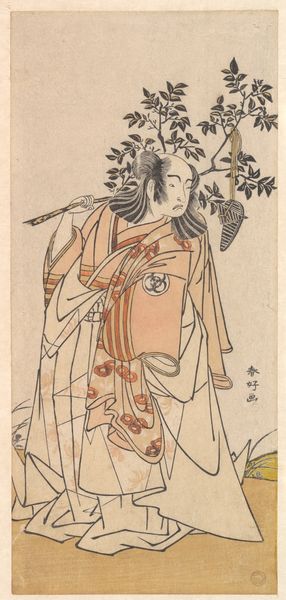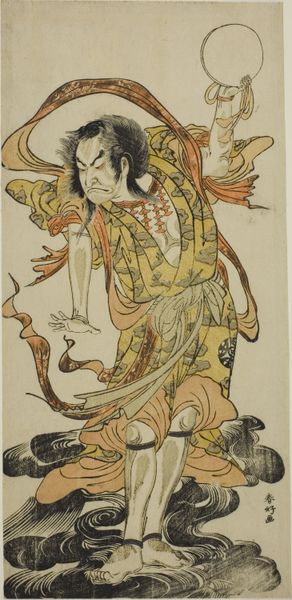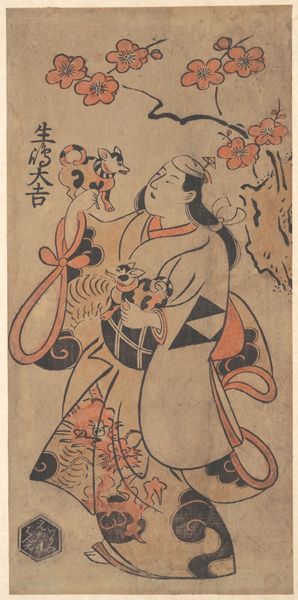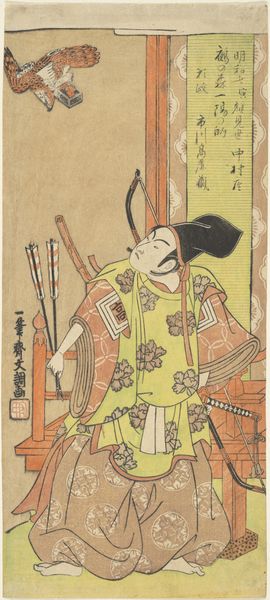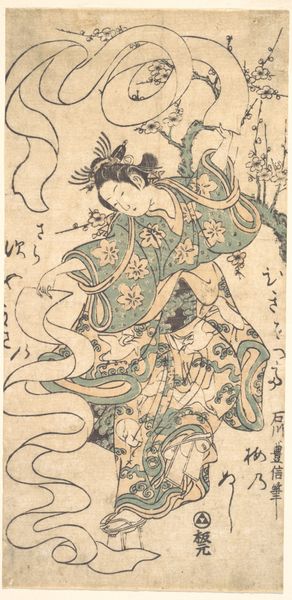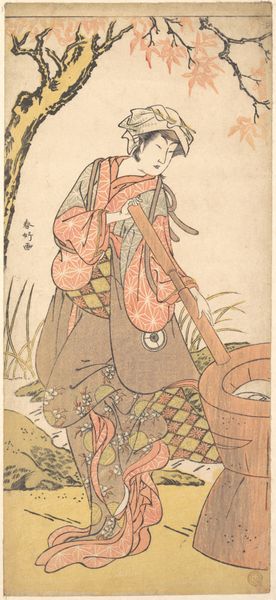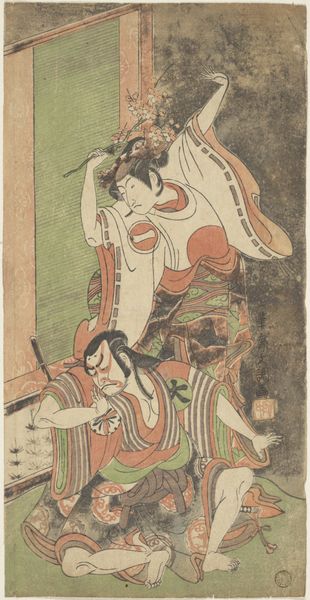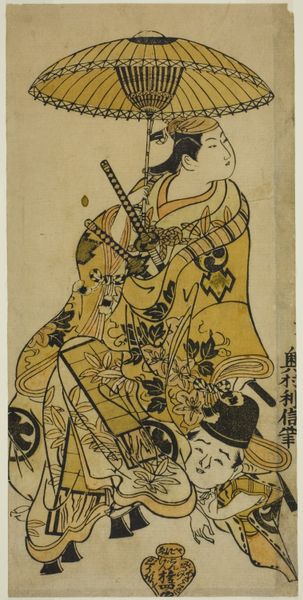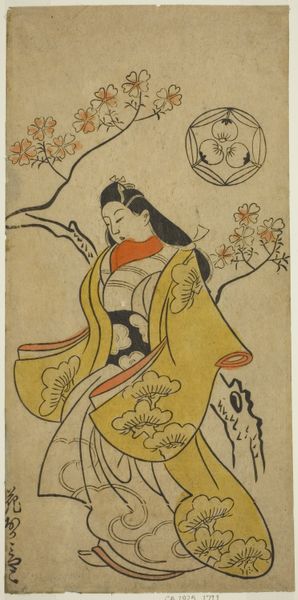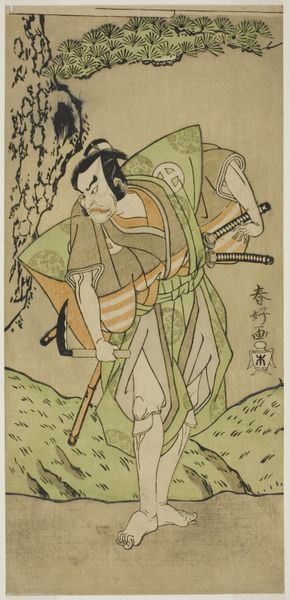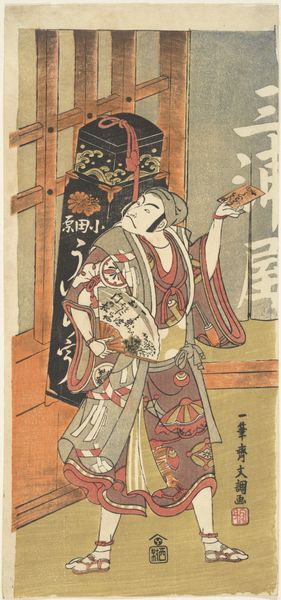
print, woodblock-print
#
portrait
#
narrative-art
# print
#
asian-art
#
ukiyo-e
#
figuration
#
woodblock-print
Dimensions: 29.1 × 14.3 cm (11 7/16 × 5 5/8 in.)
Copyright: Public Domain
Curator: At The Art Institute of Chicago, we have a striking woodblock print from around 1700, titled "The Actor Bando Matakuro I" by Torii Kiyonobu I. Editor: My initial impression is of a playfulness. The bold outlines and vivid color, plus the upward gaze…it feels so hopeful, like he’s waiting for a miracle. Curator: Well, the piece captures Bando Matakuro, a famous Kabuki actor of the Edo period, embodying a specific role. Consider the historical context. Kabuki was a burgeoning popular entertainment, often censored yet immensely influential, shaping fashion and social trends. Kiyonobu, as the founder of the Torii school of printmaking, was pivotal in creating these actor portraits that were essentially the "pinups" of their day. Editor: Pinups! I love that. It makes the woodblock a real cultural artifact, doesn’t it? There’s a certain vulnerability about him too, even if he is playing a hero, or at least, a very important person. Notice how the rising curves of the mists below contrast so satisfyingly against his stoic, solid posture. Curator: Yes, the print operates on several levels. The actor's pose, the dramatic upward glance towards the bird carrying what looks like an olive branch or a message... everything signifies meaning in the stylized world of Kabuki. Editor: That bird could be the harbinger of fame, or of freedom maybe? The actor certainly cuts a dashing figure. His robe shimmers with stylized botanicals that stand out beautifully. Curator: And such prints were a significant industry. They promoted not just the actors but the theaters and the whole Kabuki establishment. Kiyonobu wasn't just creating art; he was involved in the celebrity culture. Editor: So this isn’t just art for art’s sake. This is tied up in the real lives of audiences. Makes you wonder about all those dreams projected onto performers by their adoring audiences. Thank you for making those connections. I understand the context so much better. Curator: And by considering how cultural products reflect both the social currents and intimate hopes, art invites us into a richer understanding of what binds our shared humanity across centuries. Editor: I find it so special that someone so many years ago could reach through the ink on the page, the stage of the theater, and tap into the spirit of us now, sharing wonder, with the help of museums.
Comments
No comments
Be the first to comment and join the conversation on the ultimate creative platform.
